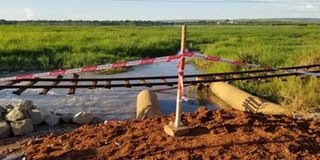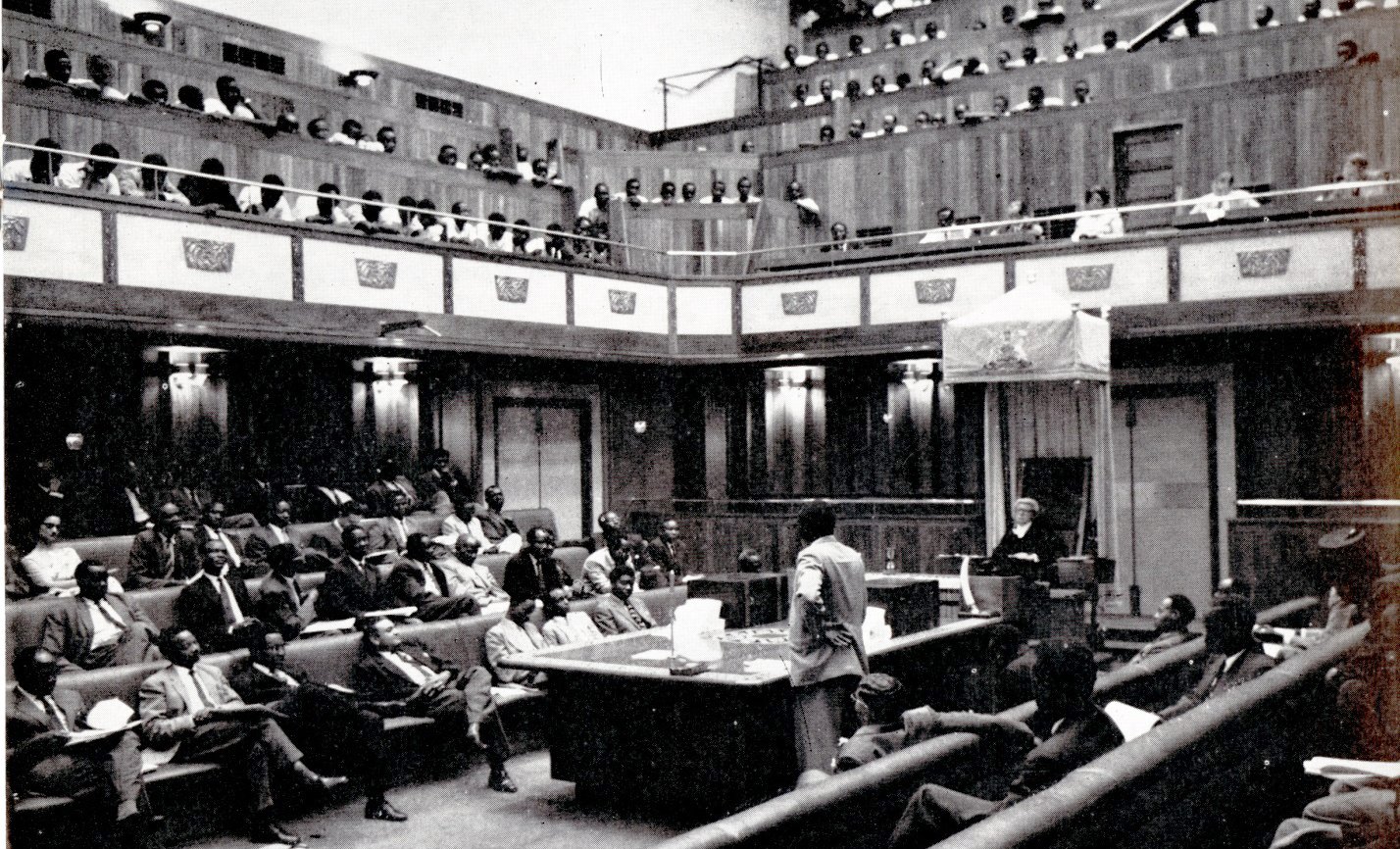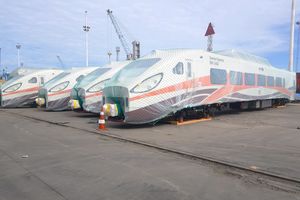
Pakwach railway line that has been abandoned. The line was constructed in 1964. PHOTO BY FELIX WAROM OKELLO
The Uganda Railways Corporation (URC) is shifting its focus towards restoring the deteriorating railway infrastructure in up-country regions. This move comes months after the successful resumption of limited passenger services on the Kampala-Mukono route.
In April, the Kampala-Mukono route was reopened, with passengers enjoying a 40-minute journey from Namanve to Kampala in the morning and a return trip in the evening.
The URC Head of Communications, Mr John Linnon Sengendo, in an interview on Monday, said: “We are moving to up-country lines to complete the network. The lines up-country are being restored.”
Pakwach
The Pakwach railway line, constructed in 1964, once played a crucial role in transporting passengers and goods, such as cotton and coffee, from Nebbi District. However, by the 1980s, the line had fallen into disrepair. Despite plans announced in 2005 to repair the Gulu-Pakwach line and related infrastructure, the railway has largely been overtaken by vegetation.
Mr Daudi Onencan, 68, a farmer in Pakwach, said: “It was cheap for a farmer in the village to transport goods to the ready market because railway lines connect a lot to other distant districts.”
The Pakwach District Chairperson, Mr Robert Omito Steen, said they have been actively lobbying for the revival of the line due to its significance in transporting bulky goods.
“We have held several discussions with line ministries and hope the railway line will be revived because it will help in transportation of bulky goods,” he said.
In 2016, feasibility studies and clearance of bush to establish the state of the railway lines were done, raising hope for their revival, but the bush has again overgrown.
Mr Sengendo said the results of the study will guide the government on the next course of action.
“The study is being undertaken by a company sanctioned by the Ministry of Works and Transport (MoWT). I don’t have the specific details of the same, but it is all about having the line reinstated,” Mr Sengendo said.
He added: “Because after the Tororo-Gulu line is done, there should be a connecting line to complete the network on the northern route. We strongly believe that the government will finance its restoration. It should also be noted that under the wider SGR project, Tororo-Gulu-Pakwach is also captured.”
Central
In Mityana District, hundreds of residents in different villages within the municipality are adamant to vacate the railway line despite several warnings.
Some of the affected villages include Bbuye, Kikumbi, Busimbi railway, Ttanda, and Kikuumambogo, among others.
The railway reserve in the area is currently occupied by many residential and commercial houses, and gardens.
Some residents, however, claim they unknowingly bought plots of land in the railway reserve from people who have since moved to other areas.
“Ever since they [affected residents] received information that they had bought land for URC, they have not settled. They always come to my office seeking for advice, but my answer has always been: ‘you were duped, please look for where to go’,” Mr Ssande Kafunda, the chairperson of Bbuye Village, said.
The Mityana municipal mayor, Mr Faustine Mukambwe, expressed support for the railway rehabilitation, noting that it will spur local development.
“I ask residents to embrace the project; on our part as municipal council, we are currently looking for land where we can build a new abattoir,” he said. The municipal abattoir was also constructed in the railway reserve.
In 2014, more than 80,000 encroachers on the railway line reserve in Busega, Nateete, Nalukolongo, Ndeeba, Kibuye, Katwe, Namuwongo, Kinawataka, Banda, Kireka, Bweyogerere and Namanve were asked to vacate in 28 days to allow Kampala Capital City Authority and URC revamp railway transport.
Despite this, many encroachers remain in place, although some have since moved.
Progress on the Tororo-Gulu Line
Mr Sengendo said rehabilitation efforts are underway on this line, noting that the track was previously nonexistent. However, new tracks are now being laid, and improvements are being made to drainage systems and level crossings.
Eastern route
Mr Sengendo stated that there are currently no plans to work on this route. He, however, said the public would be informed if and when the need arises to restore this line.
He said: “The government through URC is committed to improving railway infrastructure both on land and water, to serve Ugandans better. The improvements are aimed at reducing the cost of doing business in Uganda by reducing transport costs for both exports and imports.”
The lines are expected to reduce prices for goods and increased export earnings.
On the passenger side, he said improvements are nearly complete for the Kampala-Mukono route, which is expected to be fully operational by September. Work on the Kampala-Kyengera and Port Bell routes is also set to begin soon, with funding from the African Development Bank.
For cargo transport, new locomotives and wagons will be acquired to support the expanding network. Plans are also underway to procure multipurpose wagon ferries for routes between Kisumu and Mwanza. “Both the Metre Gauge Railway and Standard Gauge Railway networks will be able to complement each other. It’s a route that the East African Community (EAC) member states have taken to have the MGR improved as well as construction of the SGR,” said Mr Sengendo.
Teso sub-region
In Teso Sub-region, the Kumi Resident District Commissioner, Mr Ahamada Washaki, said it is in the government’s best interest to have the railway line rehabilitated. According to Mr Washaki, rehabilitation is not being felt in Teso, save for a small stretch in Kumi District that has been worked on. Much of the railway line in Teso has remained vandalised, while prominent railway stations are deserted.
The URC Head of Communications, Mr John Linnon Sengendo, explained that the line has been non-operational for more than 30 years, which accounts for its current dilapidated state. “However, works on the line are ongoing by China Road and Bridge Corporation on the 375km stretch, and the plan is to complete works in two years,” said Mr Sengendo.
Compiled by Philip Wafula, Denis Edema, Felix Warom Okello, Simon Peter Emwamu, Al Mahdi Ssenkabirwa & Enock Matovu




